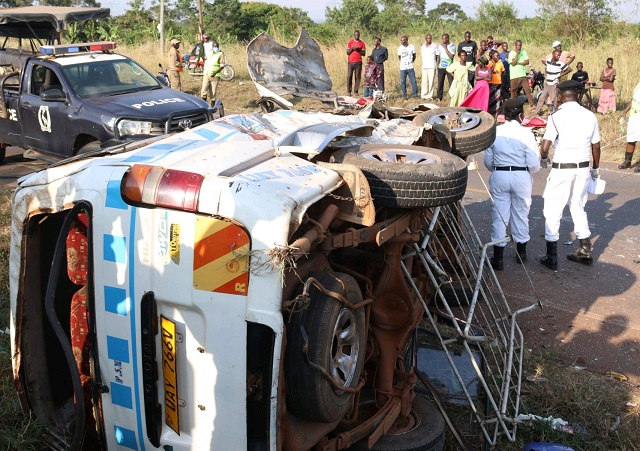
Police use second-hand information by witnesses to collect data on accidents which has limitations
Kampala, Uganda | THE INDEPENDENT | A study on the road safety on Uganda’s road accidents shows a mismatch between the death numbers reported by the police and those compiled from an independent study by Makerere University School of Public Health and the World Health Organization.
Choosing the year 2016 for their study, the researchers who used police records and information at health facilities found that the figures doubled the 3,500 that the police recorded.
For the WHO which used more parameters than police records and health centres, it was even much higher according to a report.
This is part of the findings in the Evidence-based Healthcare in Africa survey on road safety in Uganda by the School of Public Health, coming at the end of the First Decade of Action for Road Safety 2011-2020.
The Decade of Action is a global initiative of the UN General Assembly aimed at reducing deaths that result from road accidents.
Much as the 2020 police crime and traffic report shows that the traffic accident-related deaths fell to 3,269, this is a very small reduction. It could even be due to the lockdown when for several months, public transport was banned and private means restricted.
Jimmy Osuret, a Research Associate at the School of Public Health says the system that the police use to collect data has limitations because in most cases, it is based on second-hand information by witnesses.
The report recommends that there should be a digital-based system of gathering and processing information on accident victims which could integrate several databases available in the country.
He says that the findings have been commended by the Ministry of Works and Transport which is working on a modern system that should be able to give more accurate figures.
According to the UN, each year, nearly 1.3 million people die as a result of a road traffic collision which is more than 3,000 deaths a day, and more than half of these people are not even travelling in a car.
Between 20 million and 50 million more people sustain non-fatal injuries from a collision, and these injuries are an important cause of disability worldwide.
Of these deaths, 90% occur in low and middle income countries, which ironically account for less than half the world’s registered vehicle fleet.
Dr Olive Kobusingye, a consultant trauma surgeon and a university research fellow says much as most high-income countries have managed to reduce accident-related deaths, the general curve is rising because the poorer countries which account for most of the deaths are instead registering increases.
Dr Kobusingye says that the 10-year experience shows that the causes of accidents are more complex than earlier thought, and it is perhaps not possible to create a general reduction in a decade.
Under the Decade of Action, the UN General Assembly proposed several measures like increased funding for road safety activities, stronger national regulation like the use of seat belts, banning drink-driving, speed limits, and more awareness on road safety.
The goal of a safe system is to ensure that accidents do not result in serious human injury.
Kobusingye says that action in the next decade will involve rallying the private sector to take part, say that for example, of those persons or organization that have large fleets decided to control their driver behaviours, improve fleet quality among others, it would have an impact.
But she says political will at the national level is also needed, as well as providing roads that are only for pedestrians and cyclists.
In August 2020, the UN General Assembly adopted resolution 74/299 “Improving global road safety”, proclaiming the Decade of Action for Road Safety 2021-2030, with the ambitious target of preventing at least 50% of road traffic deaths and injuries by 2030.
Reports show that in poor countries like Uganda, most motor accidents happen in urban areas mainly because of the high concentration of vehicles, and the increase in vehicle volumes yet the roads have not expanded.
Eng. Patrick Osele from the Department of Roads and Bridges at the Ministry of Works and Transport says most of the roads were constructed at a time that the populations were very small. He however says that even today, some local governments are building narrow roads in fast-growing cities.
According to the UN, the economic consequences of motor vehicle crashes have been estimated between 1% and 3% of the respective gross national incomes of the world countries, reaching a total of over $500 billion.
Reducing road casualties and fatalities will reduce suffering, unlock growth and free resources for more productive use, according to the plan for the next decade.
*****
URN
 The Independent Uganda: You get the Truth we Pay the Price
The Independent Uganda: You get the Truth we Pay the Price



